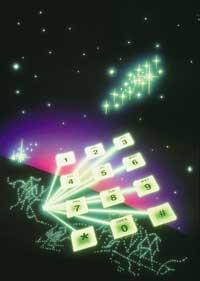Pure JAVA coffee or the future of computing?
The WWW (World Wide Web or world network of spiders) was an authentic revolution on the Internet. In addition to demanding little knowledge of the computer, it allowed the passage of a computer to another more pointer of the world through hypertextual links, adding to this system of collecting information all the capacities of the multimedia. That is, a perfect opportunity to use sound, images, video and many resources at once! A unique phenomenon, also known as Web, is undoubtedly the direct responsible for the success achieved by Internet.

But all this is history. While still half the world decides or does not connect to the Internet, deep drastic changes are taking place in the network itself. A new element to take into account in a changing environment that develops at high speed: Java. As a first conclusion, we can say that the era of static web pages has ended.
Let’s know where Java comes from. A software author of the company Sun Microsystems created a new programming language that he called Oak, which went unnoticed at first and was not paid too much attention to. It was designed to write computer chip software used to control microwave ovens, but for the next five years it was developing the language and adapting to new tasks: video game machines, CD-ROM of PCs, etc.
But it was not easy for Sun to introduce the new Oak language into the market. Believing that the absolute impulse would not have been possible, it began to be distributed free of charge through the Internet. He changed the name of the language and baptized with Java (coffee). In the slang in English), and was accessible in Internet waters. Eight months later, it was the new star of cyberspace.
But what is Java?
As mentioned above, Java is a software technology. Specifically, it is a very appropriate programming language for the internet. This tool developed by Sun has very special features. Through Java, for example, you can request and run on your own computer the applications that exist through the Internet, run them on your own computer, without the user having to know previously the characteristics of the computer. It allows millions of computers connected to the Internet to work exactly the same. In addition, Java completely prevents the transmission of viruses.
Advantages of advantages Advantages of benefits
Java language is not related to the platform, so software manufacturers must perform and analyze a single version of applications, not making different versions for Macintosh, Unix, Windows95 or other operating systems. The problem that has mixed the banks from the beginning can end forever. Goodbye to problems of immobility! As is known, due to inconicity, programs made for Windows cannot be run on Macintosh computers, for example, so in the future, anyone who has to buy computers or operating systems will not have to take into account if they can use a specific application: Java can move everywhere.
And all this how is it possible?

The contribution of the new language is: Java is not written and compiled regularly (i.e., for a particular platform) and the programs are independent platforms. Applet is the code that moves in the network. One of the most peculiar features of Java is that it does not support pointer or demonstrators outside the code. And these pointer are precisely the mangos that use viruses to adhere to programs.
Consequently, a Java applet cannot carry virus. To understand this code that crosses the network it is necessary that in the user's computer there is an interpreter that performs two tasks (such as HotJava or Netscape Navigator 2.0 browser or browser).
On the one hand, it will analyze the syntax of the applet to check if the true Java program is. On the other hand, it will execute the appelt replacing the user information. The interpreter must be placed on the user's machine as part of a browser or as part of a larger operating system.
The network is the computer
Behind this brief but, in some way, obscure phrase hides all philosophy. Java is more than just a web page reactivation tool. The cartoons that have started to appear on some servers or network servers are a sign of a deeper change, as Java can change the computer concept.
Java z, the data and programs necessary to carry out any computer action should not be on your own computer, they can be online anywhere. Therefore, you will only request them when the user needs them and they will run on your computer. That phrase of Sun can become reality: the network is the computer. The idea is simple: as larger and larger programs need larger hard drives, why not use the Internet network as a giant hard disk? At WWW there is a lot more information than anyone can use for a lifetime. Therefore, the only resources we need are a fast processor, a good internet connection and a couple of software programs.
Will the coffee remain blank?
Since programs made using Java can be used on any computer, software companies could run out of tasks. Microsoft, the world's largest software producer for PC, would lose a lot if a Java programming language other than yours were successful. That's why Java rivals are appearing: Properties of proteins On this occasion we will also see a tough competition in this matter. The truth is that it is difficult to say what will happen with Java in a universe as surprising as the Internet, although in the end it has gained another language, the philosophy that has brought us Java will be a milestone in the history of computer science. We will not immediately forget the contribution of Java and will remain a point of reference.





